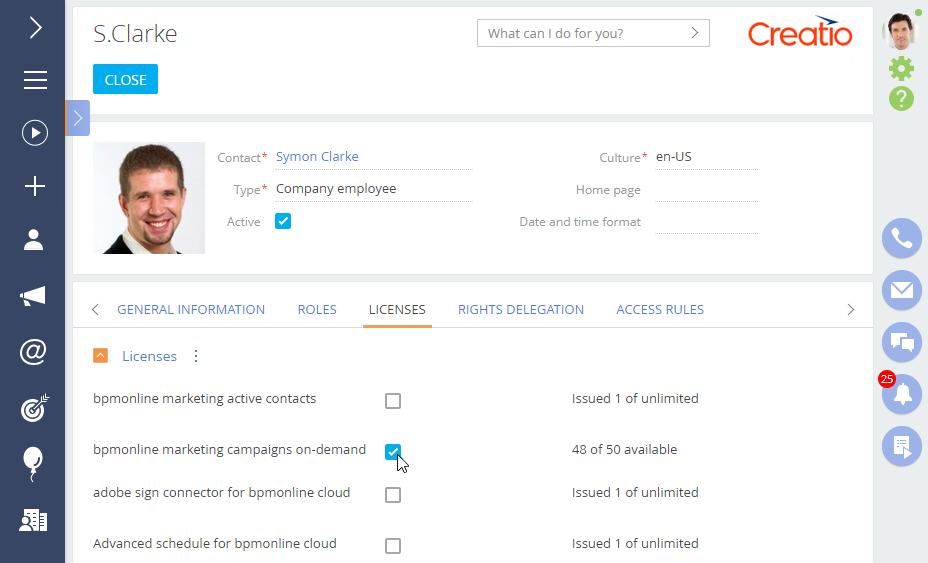•What is the difference between domain verification and email confirmation?
•After clicking a link in an email, an email recipient sees a page with an access error.
•Explain the reasons of license errors
•Are contacts with the “Soft Bounce” and “Hard Bounce” email responses still considered “Active”?
•Are contacts who were sent their emails via SMTP still considered “Active”?
What is the difference between domain verification and email confirmation?
Domain verification is done to display the correct sender name in the “From” field of emails and avoid unsanctioned emails on your behalf. After completing the domain verification, you enable the email service that your audiences use to sign your emails with your domain name. For example, if you are using UniOne and have not performed domain verification, your recipients will see the following in the “From” field of all emails:
“UniOne_Smith <postman1847554@usndr.com>; on behalf of; UniOne_Smith <smith.john@gmail.com>” or “UniOne_Smith john.smith@gmail.com from domain usndr.com”
This means that the message was sent from your email provider’s server on your behalf.
After the domain verification, the “From” string will contain only your email. Verification is performed on the DNS-server of your domain using the Sender Policy Framework (SPF) and DomainKeys Identified Mail (DKIM) methods. Domain verification process for each of the supported providers is covered in the “Domain verification for the UniOne provider” and “Domain verification for the Elastic Email provider” articles.
Sender email address confirmation is confirming that your email address belongs to you. After performing this procedure, you can send emails on your behalf. This is a one-time procedure, performed if your Creatio emails are done via UniOne service. If your emails are sent via Elastic Email, there is no need to confirm the sender’s email.
See also
•Domain verification for the UniOne provider
•Domain verification for the Elastic Email provider
After clicking a link in an email, an email recipient sees a page with an access error.
Certain countries may limit access to certain email services. In this case, the recipients will not be able to open the link from the email. We recommend adding a full URL text of your links to the email body, as well as a recommendation to copy the link in the recipient’s browser.
See also
Explain the reasons of license errors
The license error can occur in the following cases:
-
The number of active contacts exceeds the number of available licenses. Read more >>>
-
A user tries to save a section record but does not have a license for this specific functionality. Read more >>>
When I start sending a bulk email, I get an “A license is missing...” error
When you try to send a bulk email, Creatio checks the available marketing campaign and active contact licenses. Any contact added to a bulk email audience at least once - consumes an active contact license. If the number of active contacts (including those in the audience of your email) exceeds the total number of available licenses, the email cannot be sent. Learn more in the “Creatio licensing” article.
NOTE
Creatio free trials come with 1000 active contact licenses.
Creatio regularly notifies the users when the number of available active contact licenses becomes lower than 10% of the total number of paid licenses. Please check the “Notifications” tab of the Communication panel regularly.
Note
The minimum number of paid licenses required by Creatio (in percentage) is specified in the “Active contacts - warning threshold (%)” (ActiveContactsWarningThreshold) system setting. When you reach this threshold, Creatio will start sending notifications.
Note
You can view the current numbers of available and used active contact licenses on the [Licenses] tab of the [Dashboards] section.
When I try to save a record in the [Email] or [Campaigns] section, I receive an “A license is missing...” error
Creatio does not enable saving records if a user does not have a license for the corresponding functionality. To be able to save an [Email] or [Campaign] section record, the user must have a marketing campaign license. Learn more in the “Creatio licensing” article.
To distribute the licenses for the marketing campaigns, go to the [Users and roles] section, open the corresponding user page and select the checkbox next to “Creatio marketing campaigns on-demand” license on the [Licenses] tab (Fig. 1). Learn more about licensing in a separate article.
Fig. 1 Distributing product licenses

See also
•Marketing campaign and active contact licenses
Are contacts with the “Soft Bounce” and “Hard Bounce” email responses still considered “Active”?
Yes. Any contact for whom at least one communication attempt via emails, campaigns or events has been made within a year is considered an active marketing contact and requires a “marketing active contacts” license, even if the contact has “Soft Bounce” and “Hard Bounce” email responses.
See also
•Marketing campaign and active contact licenses
•Recipient individual responses
Are contacts who were sent their emails via SMTP still considered “Active”?
No. The contacts, who were sent emails via the simple mail transfer protocol SMTP, for example, via a business process are not considered active.
To be considered “active”, a contact must be a recipient of the email, a member of the campaign or event. Learn more about the active contacts in the “Creatio licensing” article.
See also






